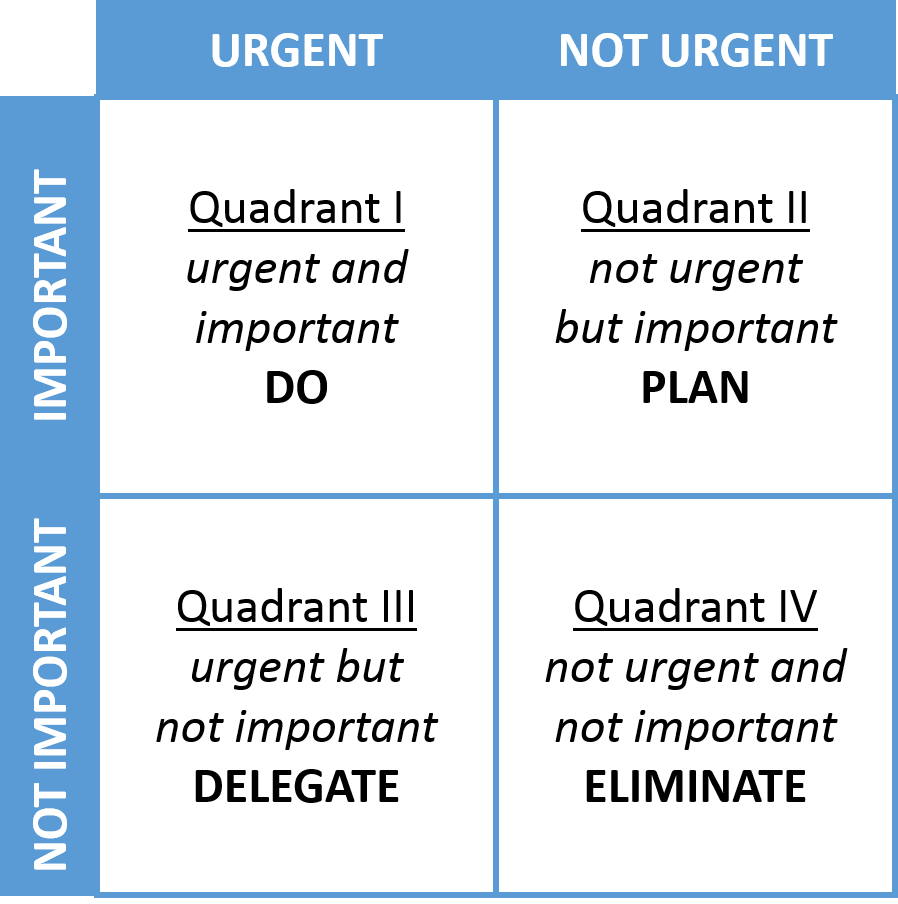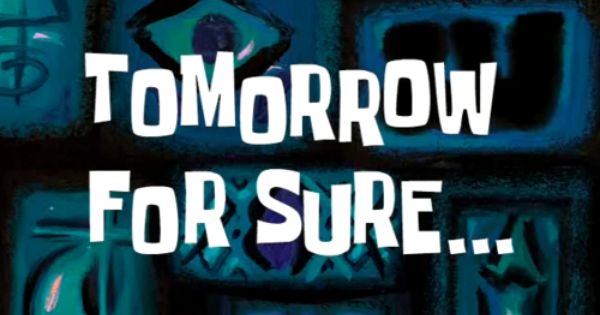The holidays are so close you can almost taste it! But there is still a pile of work that needs to get done before making it to the sweet holiday break. Sometimes our excitement for the holiday season makes work look even less appealing.
But it isn’t just during holiday seasons that one might experience some mental resistance to getting things done. Productivity slumps can happen when you least expect them, and we might feel like we need a sudden jolt to get us out of one.
You might have already heard of things like the Pomodoro Technique or the Eisenhower Matrix to help get you out of a productivity slump, but there are so many more hacks and techniques to help you out. Whether you’re finding it hard to get started or you feel like there just aren’t enough hours in a day, experimenting around with these productivity techniques may come in handy.
There are many productivity hacks out there that you can use to your advantage. Most of them can be divided into three main types of productivity techniques. There are those that focus on planning and prioritizing the things you need to do, those that help you manage your actual working time, and productivity mindsets that can jumpstart your grind. Here are just a few techniques under each category.
Prioritizing and planning
When there is just so much for you to do, everything might seem equally urgent and important, but that isn’t always the case. Sometimes just managing your to-do list can stop you from actually getting started. These types of productivity techniques may feel a bit brutal as it makes you confront what your priorities really are, but they do sure help in making things seem less intimidating and more attainable.
Getting things done (GTD)
Created by David Allen in his book aptly titled Getting Things Done: The Art of Stress-Free Productivity, he created a model to help people plan out all the work they must do. There are times when even just listing down all the things we need to do already feels like a job in itself.
GTD has 5 main steps: capture, clarify, organize, review, and engage. To start getting things done, you must first capture all tasks that come to your mind (big and small). Next, you clarify what these tasks entail, how important they are to you, and how you can get started on them. Step 3 is the time for you to organize everything, list down important dates and move around the tasks and actions that you need to get to first. Make sure to constantly review your list to keep it updated. Engaging is all about getting things done based on what you’ve already mapped out.
Out of all your tasks, GTD forces you to identify what things in your to-do list are most doable and important for your next work session. It also helps you map out concrete action steps to get each task completed.
Eisenhower Matrix
Dwight D. Eisenhower was a productive guy. He was a 5-star general due to his service in World War II and the 34th president of the USA. He spent his two terms doing grand things like creating NASA, ending the Korean War, and signing into law the important foundations for civil rights. “Who can define for us with accuracy the difference between the long and short term!” he said in a 1961 address, “Especially whenever our affairs seem to be in crisis, we are almost compelled to give our first attention to the urgent present rather than to the important future.” This statement pretty much summarizes the entire matrix. It differentiates what needs to get done from what needs to get done now.
The matrix is made up of 4 quadrants. Quadrant I is what is important and urgent. These are the tasks with set deadlines, if a task falls in Q1, then you must get to it! Q2 is for tasks that are not urgent but important. These are things that might bring you to a bigger goal but have no real deadline. Rather than getting to it immediately, set some time for it when you are less busy. Q3 is for things that are urgent but not important like every day work you need to do but don’t necessarily need your expertise. Since these tasks are urgent but don’t need you to complete them, try delegating them to someone else if you can. And lastly, Q4 is for things that are not urgent and not important. Sometimes there are things that get mixed in our to-do list that upon further reflection aren’t that urgent or important to us after all, the quick fix for things that end up in Q4 is to delete them.
Use this guide to filter through your tasks ruthlessly. Don’t be afraid of putting tasks in the 4th quadrant because eliminating unimportant and nonurgent tasks will gain you back some valuable time to do more important and urgent things instead.
1-3-5 method
This method may be considered a simplified and combined version of GTD and the Eisenhower Matrix—although you have less of a guide in sorting out your own priorities.
The main idea is to pick one “big” thing on your to-do list, 3 “medium” things, and 5 “small” things for you to do in your work session. The definition of a big, medium, or small task all depends on you. You have to evaluate your tasks and set the meter for what you think is big, medium, or small.
Do these things from biggest to smallest (1-3-5). With the split of big to small, this technique will help you concentrate on 9 items to work on and accomplish something from every type of task you have—from big projects to small housekeeping.
Manage work time
These types of productivity hacks provide structure to your work sessions. They suggest period lengths for working plus when and how long to take breaks for. There are countless variations of these different methods based on various observations and studies.
Pomodoro
The Pomodoro Technique, created by author Francesco Cirillo, is probably one of the most commonly known productivity techniques. Its premise is simple, it breaks up your work sessions into breaks and “pomodoros”. Before starting your timer, make sure to already pick what task you’ll be doing and prep any materials you might need. Don’t spend your precious pomodoro merely setting up for what you actually need to do.
A pomodoro is one 25-minute session where you work without any distractions. If you do get distracted, you must restart the 25-minute timer. After your 25 minutes of work, you can look forward to a short 5-minute break. After 4 sets of pomodoros, you are rewarded with a longer 15-minute break.
Breaking down your work thanks to the pomodoro, and having breaks fitted into your schedule, may make daunting tasks seem more manageable. The timed breaks also help you rest and relax your mind but also still keep you on your toes without giving you too much time that might make you reluctant to get back to work.
Animedoro
Inspired by pomodoros, Josh Chen decided to add his own twist to the technique which would help you be more productive with work and with your favorite shows. Instead of the 25-minute pomodoros and 5/15-minute breaks, the Animedoro, uses a 40–60-minute working period with a 20-minute break in between each cycle. The technique is aptly named Animedoro since the break would ideally be spent watching one episode of an anime of your choosing, though it can also be spent watching any other show or doing whatever you want—as long as you resume working after 20 minutes.
Animedoro may help you feel like you’re able to get more work done with the longer working time and have a greater reward at the end too, despite not giving room for a longer break after 4 sets of working. The next challenge here is having the self-discipline to control yourself from binging a series.
More time chunking techniques
Since most of these techniques are more of the same, spacing out your work in different intervals, here is a quickfire round of some divisions you might want to play around with.
The 90-minute focus block
Created by Peretz Lavie, he suggests his own time recipe similar to the Pomodoro and Animedoro techniques. The 90-minute focus block centers on working for 90 minutes before taking a break (at around 20 minutes max). This technique is based on making the most of our “ultradian rhythms” which are said to naturally occur throughout the day when our brain activity is at its peak.
Tocks
Tocks also offers its own spin on the time you should take working, but unlike Pomodoro, Animedoro, and the 90-minute focus block, it encourages you to take note of your distractions while you work. It might seem counterproductive, but the idea is to spend less energy on controlling your brain by acknowledging what is distracting you.
So, the idea is to work for 45 minutes at a time, write down what might distract you during this time, and then move on and continue working. Break time in between tocks are usually 15 minutes maximum. You may use your break time to check out your list and go over how you can minimize and address your distractions.
52:17
The 52:17 ratio is based on Julia Gifford’s study observing workplace employees and seeing what makes the most effective workers productive. Thanks to a time tracking app that she utilized for her study, Gifford discovered that the most productive employees all seem to follow similar work and break schedules.
Her study concluded that 52 minutes was the ideal work time for the most productive employees with a 17-minute break in between. Quite specific, but if it works it works, right?
Mindsets
Remembering these quick concepts might help you finally get started on that work after hours of saying “I’ll start soon” Here are a few of the simple shifts in perspective you can use to get you off your booty.
Eat the frog
It might sound intense but eat the frog is a very basic concept. It centers on the idea that if it was your job to eat a frog every day, then wouldn’t it be better for you to eat it in the morning and get it over with rather than having to dread and fear it the whole day if you eat the frog later on? This mindset forces you to push past any resistance you might feel to getting your tasks done.
Identify your frogs and eat them as early as you can! Don’t give yourself the chance to put it off till later because this will just leave you with a nagging sensation at the back of your mind, and the dread of getting to the time when you eventually have to eat the frog. It’s best to eat the frog ASAP to get it out of the way.
This also goes for if you have many frogs to eat, it’s better to start by eating the biggest one first to get the worst over with. Eating the biggest frog as soon as you can, may also help you build momentum and get more work done as early as possible. It may seem like a simple idea, but you’ll be surprised at how effective a battle cry “eat the frog” is on a lazy day.
2-minute rule
Another simple but effective mindset. Some days our bodies just feel like lead and even just getting started on a task seems impossible—much less getting things done. The 2-minute rule encourages you to commit to something for just 2 minutes. It doesn’t matter how big or difficult the task is, whether it’s even possible for you to finish the task within 2 minutes. What matters is that you commit to working on it for just 2 minutes. What happens after your 2 minutes are up? Well, that’s all up to you.
This idea is a way of tricking yourself to get things done. Agreeing to work on something for a crazy short time like 2 minutes shouldn’t be too hard, right? It’s just 2 minutes. But then, after your 2 minutes are up, then doesn’t it feel like a waste to just stop? You already started after all.
The 2-minute rule helps you make that first step to actually get started. This rule focuses on the process rather than the outcome. At the end of the day, no one is forcing you to continue working after your 2 minutes are up.
Don’t break the chain
Let’s kick things back old school style with a method also known as The Seinfeld Method. This trick requires you to have a calendar (printout or online) and a way to write on it. The idea is that every day, you should set a task that you need to do and once you’ve accomplished it, you mark your calendar. It’s that simple.
Over time, you’ll create a chain of X’s and your brain will then try its best to keep the chain going, urging you to continue accomplishing this task as the days go by. Your task doesn’t necessarily have to be a daily thing. For example, you want to read a book on the weekends, then you would only mark your weekends. Just make sure to keep the pattern noticeably visible on your calendar and don’t break the chain!
There are so many more productivity techniques, methods, and hacks out there for you to discover. It might take a while before you discover the perfect one for you. Who knows, you might even need to modify or even combine techniques to find one that you like. But that’s the great thing about these techniques! You can always adjust your preferred method to better suit you and your needs. Good luck and wishing that you have a productive pre-holiday work season!
Other POP! stories you might like:
A look back at possibly some of the best episodes in the history of The Walking Dead
Unpopular opinion: Mankind has a problem with its fixation with true crimes
Breakout Pop Sensation vaultboy reveals new EP ‘this is what i get’
Peaceful Gemini finds her way towards introspection and healing on her EP, Leo Rising
Of Mercury welcomes edginess with youthful exuberance on debut album, Changin’.







